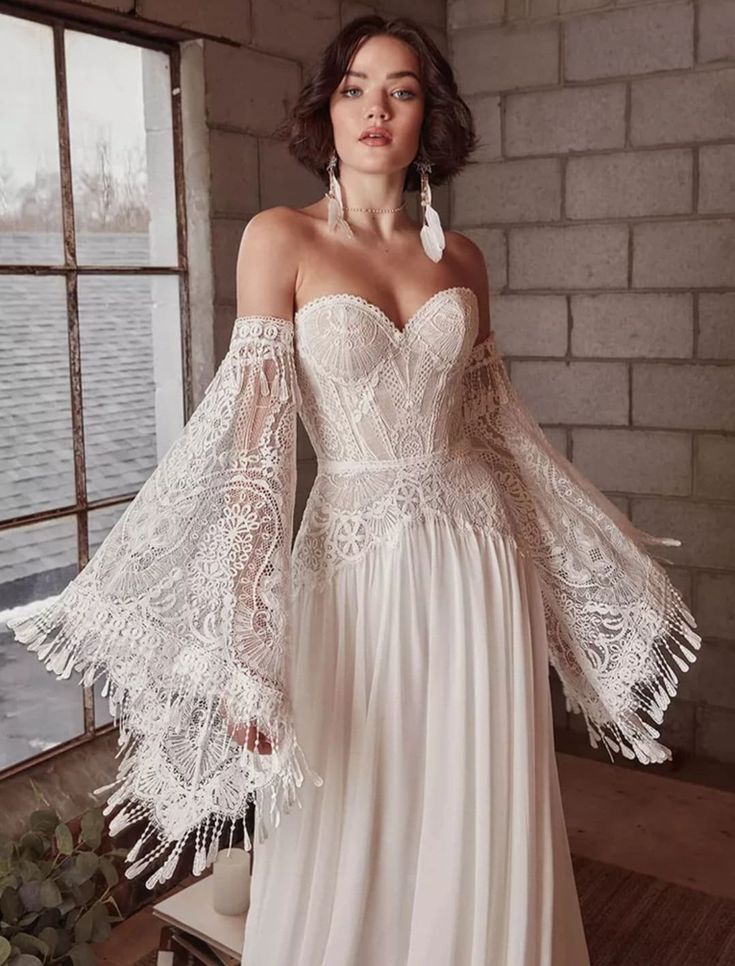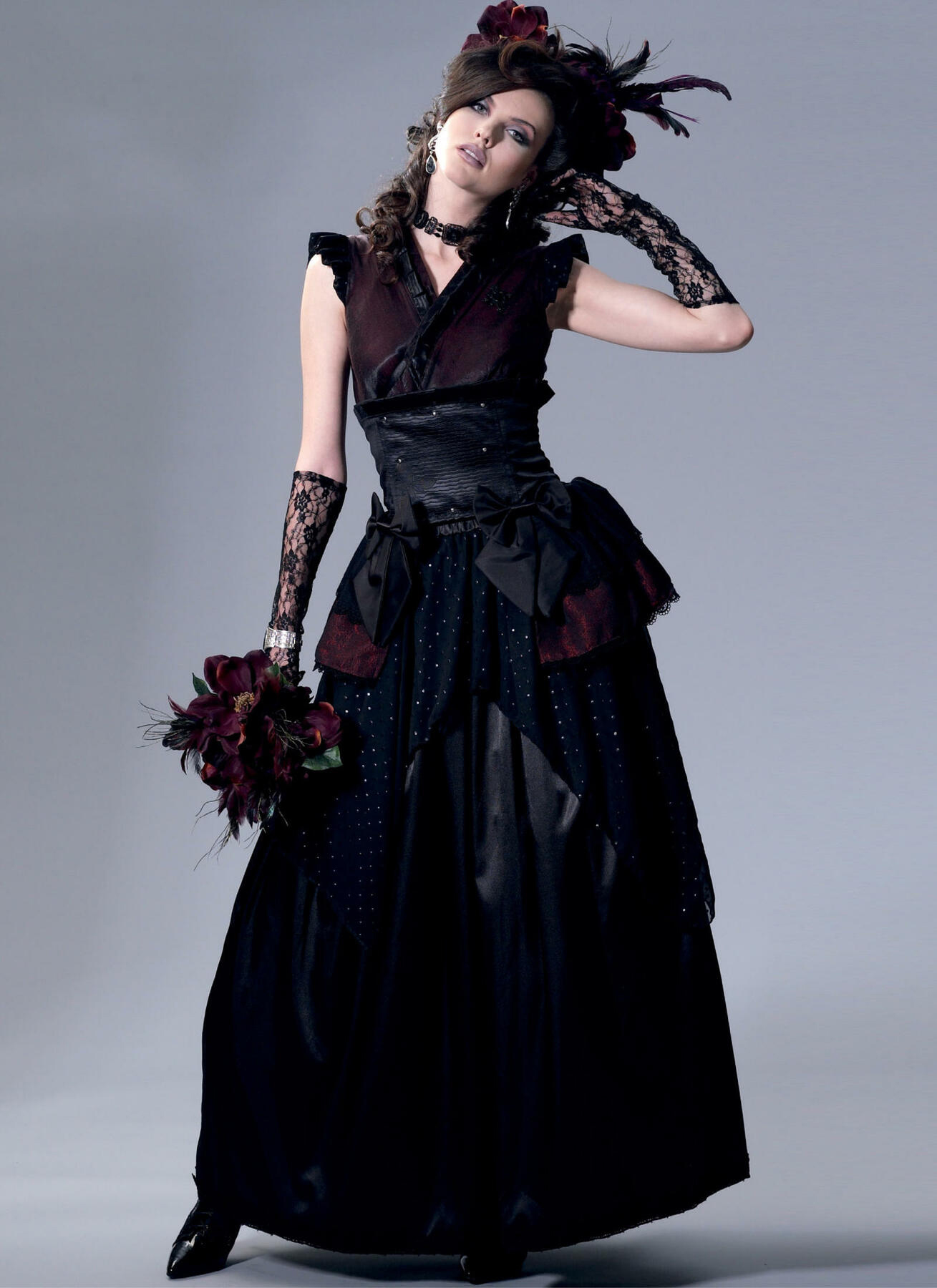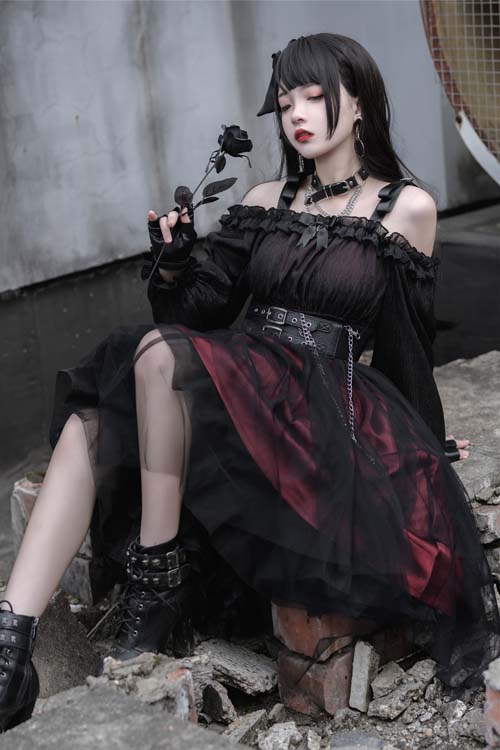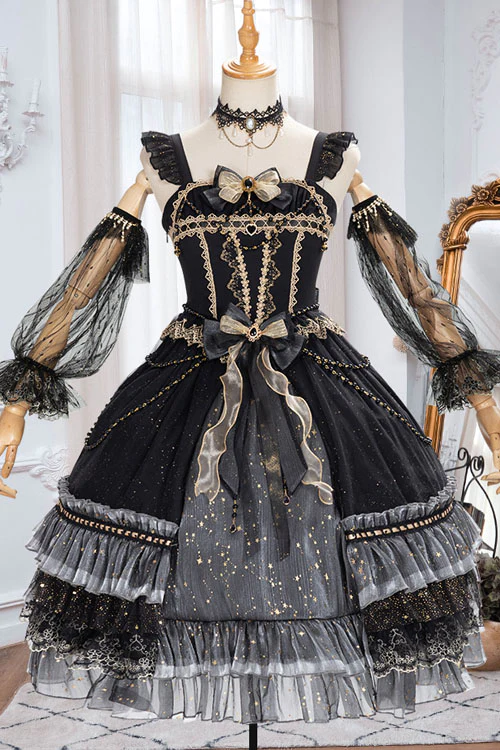Intro
In this article, we have prepared various matching suggestions and tips for gothic dress detached sleeves. If you are interested in gothic dress detached sleeves, come and take a look.
Detached Sleeves
Detached sleeves are a type of clothing in which the top has no shoulders and the sleeves are separated from the main body of the clothing. It is also one of the cute attributes in ACG subculture.
Split sleeves are a kind of half-sleeved clothing that is worn directly next to the forearm and fixed near the elbow or above.
The main body and clothing theme are generally consistent.
This kind of clothing is not common in reality, but in the ACG cultural context, its settings (length, shape, tightness, skin exposure, etc.) vary according to different works, and some settings are very gorgeous. (Some of them are based on real clothing, with the sleeves cut off and set into sleeves). In order to match the sleeves, ACG characters often wear sleeveless clothes or short-sleeved clothes.

Key points for matching gothic dress detached sleeves
How to match gothic dress detached sleeves? What items are suitable for gothic dress detached sleeves? Need some outfit inspiration? In this part we will introduce you one by one.
Retro Aristocrat
The first thing everyone needs to know is that the Gothic era was the second largest international era in Europe that began in the mid-12th century and entered the Middle Ages. Therefore, even today, when it is integrated with modern clothing styles, Gothic clothing is also a style of clothing with a retro flavor.
Moreover, since the 13th century, clothing has become more luxurious and colorful, and the clothing trends generated and formed by the court life of the emerging nobles show the unique clothing cultural characteristics of the Gothic era. From this, we can also know the aristocratic nature of Gothic clothing.
This is a retro, aristocratic clothing style. Gothic dress detached sleeves are certainly no exception.

Tailored
In early Gothic clothing, the gender distinction between men and women was still not obvious, and the clothing was mainly spacious and tubular.
By the 13th century, the sense of body-hugging fit that emerged in the Romanesque era was developed and emphasized, and three-dimensional tailoring methods emerged, making the clothes that wrap the human body develop from the past two-dimensional space to a three-dimensional space.
In the 13th century, influenced by architectural style, there were new breakthroughs in the cutting methods of clothes. In the past, the clothes in the loose clothes era had a strong planarity, and their cutting was classical or oriental “straight-line cutting”. Although clothes in the Romanesque era were also waisted, they were only cut inward from both sides, still trying to get rid of the frame formed by ancient clothing.

At this time, the new method was to remove the excess part between the chest and waist from the front, back and side. What is particularly noteworthy is that from the sleeve heel to the hem, several shuttlecock boards were added to the side. Triangular cloth, between these irregular triangular cloths, many prismatic spaces are formed at the waist. This is the “dart” on our clothes now. In English, it is called Dart (meaning throwing gun or shuttle mark, because the shape when pinched is prismatic. named after shape)
This creates a side profile that has never been seen on garments in the past. It is precisely because of the formation of this side that the legal cutting method was completely separated from the ancient wide clothes composed of two-dimensional space, and the basic type of narrow clothes composed of three-dimensional space in modern times was established.

Dart changed the unsightly horizontal pleats that appeared when the waist was only tightened from both sides, and showed the natural shape of the torso without any effort. The graceful curves of the human body (especially the female body) were born. On the other hand, the volume of the lower body skirt is greatly increased by adding many triangles of fabric in four directions, forming many long longitudinal pleats, emphasizing the feeling of vertical lines, which is in line with the rising vertical lines of Gothic architecture.)
Emphasis on shoulders and neck
The general characteristic of clothing in the 13th century was to hide the skin as much as possible. Sometimes even the neck and chin were not allowed to be exposed and had to be wrapped with a neck cloth. This is a manifestation of religious rules suppressing human nature.
But the development of modern clothing does not emphasize this point. One of the great features of our gothic dress detached sleeves is that they can expose the skin of the shoulders and neck. Because of the problem of the heavy hem of the skirt mentioned above, by cutting the upper body part The fabric can reduce the heaviness of the entire dress and will not make people feel like you are wearing a curtain cloth.

Here are two other tips that can deepen the lines of your shoulders and neck:
Gloves
The dressing logic is to separate the color blocks on the wrist, which can make the arms look longer and show the beauty of the curves.
Choker
A choker is a necklace that is above the collarbone and at the bottom of the neck. The biggest difference between a choker and a necklace is the position. The position of a choker is mentioned earlier, while a necklace falls downwards. If it is a gemstone necklace, it can become a highlight, but the choker is mainly for firmness. The perfect fit can directly show the slenderness of the neck, especially the black satin choker, which not only shows fair skin color, but also has a luxurious feel that fits the gothic style.
Waist chain
A belt embellished with metal plates and gemstones adorns the hipline, marking the dividing line between a fitted upper body and a roomy lower body. This was a very popular combination in the 14th century, a unisex style of outerwear called cote hardi.

Gothic Accessories
In the 14th and 15th centuries, it was popular for French men and women to hang various strange little silver bells on their necks or belts, and the chain belts they wore were large and heavy. Women’s gold, silver, gemstone necklaces, bracelets and rings are also eye-catching. In the 14th century, it was fashionable for women to wear fingerless gloves, and violet perfume gloves were the most fashionable. In the 15th century, it was fashionable for men to use canes, and fans became a must-have for women after being introduced from the East. They had ivory or gold handles, decorated with ostrich, parrot and peacock feathers and set with precious stones. There was already a mirror-making industry in Venice in the 1st century. Fashionable men and women carry small mirrors in small silk bags.
These are all accessories that can be used for reference, as well as the gloves, chokers and waist chains I mentioned in the previous section, which are very suitable for our gothic dress detached sleeves.

Conclusion
Of course, Gothic fashion is “not afraid of not being able to make it, just afraid of not being able to think of it”. Sometimes, you can wear a wide black tie or simply tie some black ribbons around your snow-skinned neck, which can have an unexpected decorative effect.
If you want to know more, such as goth hair style or makeup, you can read our previous articles: Goth Hairstyles: Unleashing the Dark and Edgy Charm- Dark Enchantments and How To Do Goth Makeup Looks: A Complete Guide.
